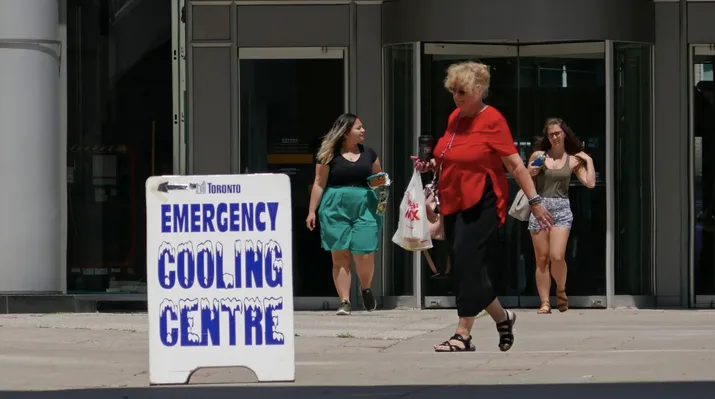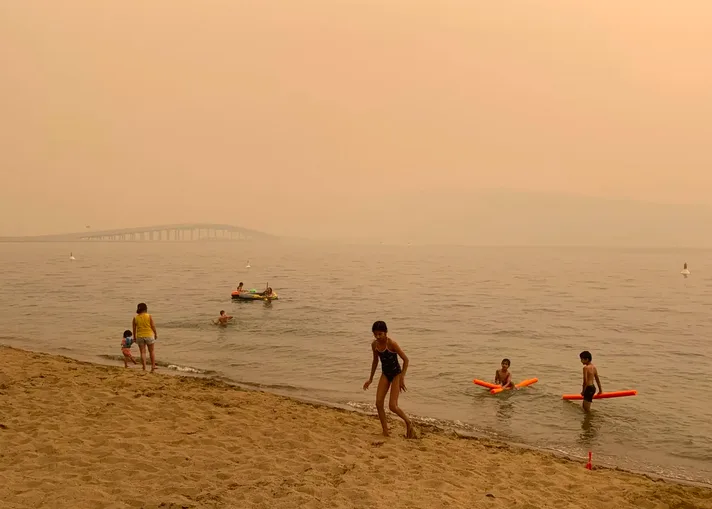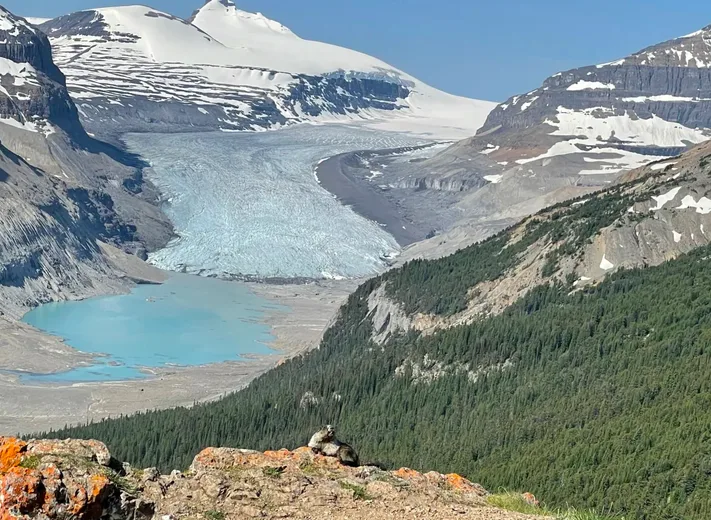
What the new UN report warning of climate impacts means for Canadians
The United Nations Intergovernmental Panel on Climate Change (IPCC) once again issued a dire report warning that without a radical reduction of our greenhouse gas emissions, we are on a course for global warming that will have grave consequences.
Monday's report, which examined several scenarios, including one of low carbon emissions and one of high carbon emissions, or a business-as-usual approach, said the planet has already warmed almost 1.2 C above pre-industrial levels. The IPCC is calling on world governments to reduce CO2 emissions to limit that warming to 1.5 C, though it appears we may hit that threshold within the next two decades unless drastic reductions are made.
We are already seeing the effects of climate change across Canada, including more intense wildfires, heat waves and drought. There is nowhere — and no one — that will not be affected.
Here are just some of the impacts we can expect across the country.
DEEP CHANGES IN THE ARCTIC
The Arctic is warming at more than twice the rate of the rest of the world, and according to the report, it's "virtually certain" that it will continue for the rest of the century. And that comes with many consequences.
Polar regions have begun to experience extreme heat events at more than three times the global rate. According to the report, this is expected to continue and will lengthen the fire season.
Permafrost has been thawing in the Arctic since the 1980s. This is particularly concerning because it releases methane, another greenhouse gas that contributes to global warming.
While winter snow may increase in the far north and central Arctic, the length of snow in the spring has been declining and will likely continue to do so.
Then there's the ice. Arctic sea ice cover is at its lowest level since 1850, and the Arctic is projected to be practically ice-free at its summer minimum in roughly 30 years.
"We have already committed to more warming, more ice loss from glaciers and ice sheets, and more sea level rise," Ella Gilbert, a post-doctoral research assistant at the University of Reading who was not involved in writing the report, said in a statement.
"We will probably see summers without Arctic sea ice before 2050 and the Greenland and Antarctic ice sheets will continue to shrink. We may even be hurtling towards unpredictable and irreversible tipping points in the climate system."
All these changes have a snowball effect. Polar regions are deeply important to regulating the global temperature. Less snow means more sunlight is absorbed by the darker water that's been exposed, which in turn leads to further warming not only of the region, but of the entire planet. It's what is referred to as a positive feedback loop.
These changes deeply affect those who live there, particularly Indigenous people who rely on snow cover and the cold weather.
"These aren't surprising issues. [The] Indigenous world who rely upon the well-being of their environment and the well-being of their climate and the land and the waters and everything that we depend on for our food source has been impacted for many, many years," said Siila Watt-Cloutier, an Inuit environmental, climate change and human rights advocate, who was not involved in the report.
"And we have been signaling these messages for many, many years."

Children play on Hot Sands Beach in downtown Kelowna, B.C., near Okanagan Lake on July 30, 2021. The William R. Bennett Bridge is barely visible due to heavy wildfire smoke. (Winston Szeto/CBC)
MORE HEAT EVENTS
In a summer where fires continue to rage across British Columbia, and the hottest temperature ever recorded in Canada was reached in June — 49.6 C in Lytton, B.C. — it may not come as a surprise to many Canadians that heat events are only expected to worsen.
In northern North America, which includes most of Canada, the report found that "temperature increases are projected to be very large compared to the global average, particularly in the winter."
"Heat waves, and changes in fire weather — that is the frequency or the likelihood of getting the combination of dry, hot conditions that lead to wildfires like the ones we're seeing this year — those increase along with temperature," said Greg Flato, senior research scientist with Environment and Climate Change Canada and vice-chair of the IPCC group that authored the report.
"The higher the temperature gets, the more frequent, and the more severe these heat waves will become and the more frequent and more severe the fire weather conditions will become."
A TOLL ON OUR OCEANS AND WATER
One of the effects of a warming climate is rising sea levels. The report found that it is "virtually certain" that sea levels will rise around the world throughout the 21st century and will "continue to rise for centuries to millennia."
That's not only due to a warming ocean which then expands, but also a result of melting glaciers and ice sheets, something that we're seeing now across Canada, but also in Greenland.
"So sea level rise will continue to increase. And the rate of sea level rise will depend on future emissions," Flato said.
"But for coastal communities that has implications then for the frequency or the likelihood of severe inundation flooding, high sea level extremes … so depending on where you live, that will be an increasing threat."
However, the report found that the surface of the North Atlantic Ocean has warmed slower than the global average or slightly cooled. But it has also increased in salinity, which can affect ecosystems.

A hoary marmot perches on rocks near the Saskatchewan Glacier, the longest outflow glacier from the Columbia Icefield near the Alberta-B.C. border. Glaciers around the country will experience further melt with a warming climate. (Christine Boyd/CBC)
In the Rockies, the glaciers are melting which may create more glacial lakes. Due to temperature differences, experts also expect to see shifts in when rain transitions to snow and the range of snow and ice conditions over the next few decades.
In Ontario, parts of Quebec and the Atlantic region, it's very likely that there will be increases in the amount of rain as well as extreme precipitation. This means there is likely to be more flooding not only along our waterways, but also in places that normally don't flood.
HOTTER CITIES
Most people across the world live in cities and Canada is no different. But living in these concrete jungles means that the effects of increasing heat waves are exacerbated. This is referred to as the urban heat island effect.
This is because tall buildings close to one another prevent natural air circulation and also absorb more heat. That heat is then re-emitted at night.
Increasing urbanization has made temperature extremes in cities worse, particularly for nighttime extremes.
In many cases, this means that air pollution worsens as surface ozone particles increase. This is exacerbated by rising fires and smoke.
More urban development and more frequent heat waves with more hot days and warmer nights will only add to the heat stress in cities.
The difference of the intensity and frequency of these projected impacts matter with even percentages of a degree. The IPCC's special report released in 2018 titled Global Warming of 1.5 C illustrated the difference between warming of 1.5 C and 2 C. It illustrated that consequences and effects on humanity increased drastically at 2 C of warming. That's why it's important to cut emissions now.
"What these low emission scenarios illustrate is that we do have the capability to limit warming if, collectively, we're able to reduce emissions quickly enough and get to net zero by the middle of this century, we can limit warming to one and a half degrees or somewhere not too far above that," Flato said.
"From my perspective, that's kind of empowering in the sense that there's something we can do about it. It's not an inevitable consequence. So we have agency, and we can act. We can act individually; we can act collectively."
This article, written by Nicole Mortillaro, was originally published for CBC News.











